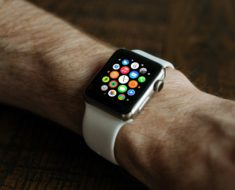China wants to be number one in the space race. The Chinese space program started later than the U.S. and Russian programs. But China’s space program suddenly became the program to watch, thanks to their Chang’e 4 spacecraft landing on the backside of the moon. That’s a first. But China didn’t want to just land on the backside of the moon to receive global attention. Their spacecraft has seeds on board, and those seeds started to sprout.
The Chang’e 4 landed on the moon January 3rd. Thanks to an assortment of technological equipment, the spacecraft is able to study the geology of the backside of the moon as well as grow cotton, potato seeds, and yeast while the spacecraft sits on the moon. The Chinese also added fruit flies to the list of things they need to establish a possible food-filling station on the moon.
The Chinese put the seeds in a sealed container on board the lunar lander. The seeds are part of a mini-biosphere. The Chinese called that type of environment an artificial, self-sustaining world.
The Chinese backside lunar min- biosphere experiment also tests respiration and photosynthesis capabilities. Chinese scientists and techno-experts want the environment to produce living organisms that will produce energy. This giant leap in space exploration is the handy work of 28 Chinese Universities. The organisms inside the relatively small container have a supply of nutrients, water, and air, according to a BBC article.
The biggest challenge facing Chinese scientists is the moon’s temperature. Scientist found a way to keep the temperature inside the growing container constant in order to sustain plant life. But the scientists don’t know if the temperature will change in the container after an extended stay on the moon.
The Chinese also have to control the number of nutrients and humidity the seeds get. Some people think the Chang’e 4 mission will contaminate the moon with all the biological material on board. But the scientists say that won’t happen. According to several reports, U.S. astronauts left several containers of human waste on the moon.
After 16 days on the moon, the cotton seeds show bud growth. The Chinese claim that feat marks the completion of the first biological experiment on the moon. And that experiment opens the door for human space travel. The moon could act as a food station for people traveling to Mars. China expects to send a spacecraft to Mars in 2020.
Dil Bole Oberoi





